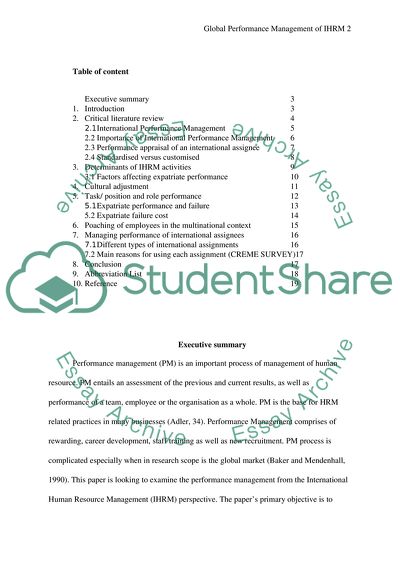Cite this document
(“Global Performance Management of IHRM Essay Example | Topics and Well Written Essays - 3000 words”, n.d.)
Global Performance Management of IHRM Essay Example | Topics and Well Written Essays - 3000 words. Retrieved from https://studentshare.org/human-resources/1673681-global-performance-management-of-ihrm
Global Performance Management of IHRM Essay Example | Topics and Well Written Essays - 3000 words. Retrieved from https://studentshare.org/human-resources/1673681-global-performance-management-of-ihrm
(Global Performance Management of IHRM Essay Example | Topics and Well Written Essays - 3000 Words)
Global Performance Management of IHRM Essay Example | Topics and Well Written Essays - 3000 Words. https://studentshare.org/human-resources/1673681-global-performance-management-of-ihrm.
Global Performance Management of IHRM Essay Example | Topics and Well Written Essays - 3000 Words. https://studentshare.org/human-resources/1673681-global-performance-management-of-ihrm.
“Global Performance Management of IHRM Essay Example | Topics and Well Written Essays - 3000 Words”, n.d. https://studentshare.org/human-resources/1673681-global-performance-management-of-ihrm.


